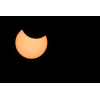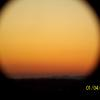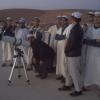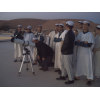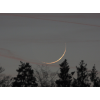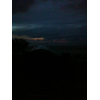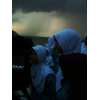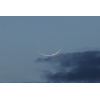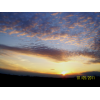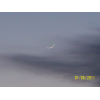Visibility of Safar Crescent 1432 AH
- When to Observe Safar Waxing (NEW) Crescent ?
- Safar Waxing (NEW) Crescent Observation Results
- The OFFICIAL First Day in Different Countries
- When to Observe Muharram Waning (OLD) Crescent ?
- Muharram Waning (OLD) Crescent Observation Results
When to Observe Safar Waxing (NEW) Crescent ?
The geocentric conjunction (Geocentric New Moon) will occur Inshalla on (Tuesday 04 January 2011) at 09:03 UT.
Sighting the new crescent on (Tuesday 04 January 2011) and (Wednesday 05 January 2011) is shown in the below graphs using the program Accurate Times by Mohammad Odeh according to Odeh criterion. Where:-
- It is impossible to see the crescent from the areas located under the red color. Because either the Moon on this day sets before the Sunset and/or the topocentric conjunction occurs after the Sunset.
- The crescent is expected to be seen by optical aid only from the areas located under the blue color.
- The crescent is expected to be seen by optical aid from the areas located under the magenta color. In these areas the crescent could be seen by naked eye if the atmospheric conditions are superb and the observer is experienced.
- The crescent is expected to be easily visible by naked eye from the areas located under the green color.
- The crescent cannot be seen from uncolored areas, even though the Moon sets in these locations after the Sunset and the topocentric conjunction occurs before the Sunset, but the Moon is not sufficiently illuminated in order to be seen as crescent even by optical aid.
- Kindly notice that the below graph shows the possibility of seeing the crescent from areas between 60 degrees north of Equator down to 60 degrees south of Equator.
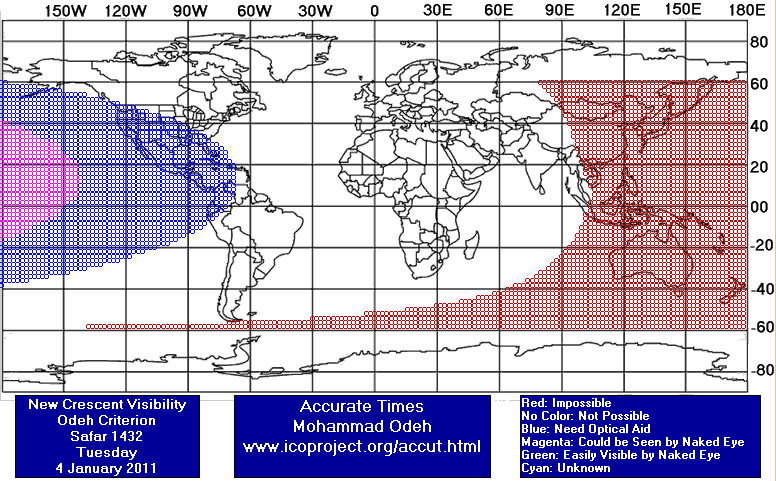

According to the Universal Hejric Calendar (UHC), which is based on the calculated crescent visibility, the start of this month in the Eastern Region will be on Thursday 06 January 2011 and in the Western Region will be on Wednesday 05 January 2011. Kindly notice that the UHC is a pre-calculated calendar, which adopts a certain criterion to start the new Hejric month. Your country/organization might adopt different criterion to start the new Hejric month. So it is highly advised to read the UHC website before giving any judgment.
- Results of seeing the crescent, and the first day of the month in different countries will be added here Inshalla as we receive the reports from ICOP's members. If you wish to be a member in ICOP, or to know more about it, kindly click here.
Safar Waxing (NEW) Crescent Observation Results
Tue 04 January 2011
Saudi Arabia
Mr. Saleh Al-Saab said: "The crescent was only 2 degrees above horizon , the sky was cloudy mostly allover, the crescent was not seen any where in the kingdom, but I will attach the crescent image during the conjunction !!!!!!!!!!!!"
South Africa
United Kingdom
Eng. Qamar Uddin said: "On Tuesday 4 January 2011 (29 Muharram 1432 AH) many people from throughout UK have attempted to sight the crescent moon (Hilal) of Safar after sunset. None of the groups were able to sight the Hilal as most places were cloudy. We have not received any reliable sighting news from countries east of UK/Morocco either. However, we have received negative sighting report from Jamiat-e-Ulama, South Africa. Therefore, the Ulama (including Wifaq/Batley) have decided that the month of Muharram 1432 AH will complete 30 days and the month of Safar 1432 AH will start from Thursday 6 January 2011, Insha-Allah. Note that there was a partial solar eclipse on 4 January 2011, witnessing the New Moon Conjunction with the human eye by many thousands of people from around the world. It is generally not possible to sight the Hilal on the same day of a solar eclipse, after sunset. There is also a Fatwa (legal ruling) from Sheikh Saleh Ibn Othaimeen of Saudi Arabia to this effect."
United States
Dr. Javad Torabinejad said: "This evening (Tuesday, January 04, 2011), the crescent moon of Safar was not sighted in Blacksburg, VA. I arrived at my sighting location prior to sunset (sunset: 5:17 pm EST) and using a pair of binoculars (7X50), started looking for the crescent in the expected area in a cloudless western horizon. I stayed there till 5:45 pm (moonset: 5:48 pm EST). Earlier today, using the pair of binoculars, I attempted a daytime sighting around 1:00 pm for 30-45 min with no success. The sky was mostly cloudy with passing clearing patches. At 1:20 pm, the temperature, relative humidity, and pressure were 4 C, 45%, and 1014 mbar, respectively."
Wed 05 January 2011
Algeria
Mr. Hocine Chikh Aissa said: "15 persons were present in Ami Said instutit. Safar 1432 crescent was seen easily by naked eyes at 18:10 LT"
Bangladesh
Mr. ABM Ruhul Hassan said: "The Crescent was not sighted from bangladesh due to dense fog in the western sky."
Germany
Mr. Samy Khadem-Al-Charieh said: "I first saw Jupiter at about ten to five and before leaving the site I even saw Altair at 17:20. When I went back home the crescent was still visible. The moon set at 18:07."
Eng. Martin Elsaesser said: "The crescent could easily be observed from home some 32hours after the partial solar eclipse. The weather was quite clear and cold. After finding the crescent with small binoculars soon after sunset, it could later easily be seen with the naked eye, too. Running around with tripod and camera kept out some of the freezing temperatures."
Eng. Gerhard Ahmad Kaufmann said: "I arrived a little late at my lookout point, about 35 min after sunset, but I could immediately spot the crescent by naked eyes at about 6 degrees altitude. Then I could observe it sinking down for 35 min until it disappeared in a low layer of clouds at the southwestern horizon. After a period of several weeks with frost, snow and always covered sky, today the weather had cleared up and the air was still cold but clear."
Malaysia
Mr. Kassim Bahali said: "The hilal was seen at Al-Khawarizmi observatory with Meade LX200 8" at 19.49 local time. The western sky was cloudy but the hilal was seen in between the thick cloud. The hilal was not seen by naked eyes. About 70 students school from Fatimah Al-Zaharah were joined to see the hilal."
Nigeria
Oman
Prof. Mohammed Al-Bussaidi said: "We tried to observe the crescent before sunset and after sunset. We sighted the crescent 40 minutes before sunset using a CCD. And thereafter the crescent was seen until 7 minutes before the Moon set."
Pakistan
Mr. Alam Sultan said: "On my request, Today (Wednesday 5 January 2011 = 29 Muharram 1432 in Pakistan) nearly 100 persons (Members of the moon-sighting committees of our institute "JAMIA-TUR-RASHEED" + my friends + their companions) tried to sight the moon all over Pakistan at more than 33 places. As it was clear or little cloudy at following places therefore moon was easily sighted there, as it was expected astronomically: Ghotki, Battal, Deer, Quetta, Zhob, Pishin, Turbat. Due to clouds, the moon was not sighted in whole Punjab and many other places of other three provinces. Note 1 : Chairman of central official moon sighting committee of Pakistan mufti Munee-bur-Rahman told me on my mobile phone that after receiving the positive reports, the moon sighting committee officially announced that 1st Safar 1432 will be on Thursday 6th January 2011 in Pakistan after ending the 29 days of Muharram 1432. Note 2: After some days, inshaallah, a detailed report of this observation in Urdu will be available at www.esnips.com/web/moonnewsofjamiaturrasheed "
Saudi Arabia
Tanzania
Mr. Zaffar Sheriff said: "Confirmed sighting at 6.57pm, just about fifteen minutes after sunset. It was earlier seen at 6.52pm with binoculars."
United Arab Emirates
United Kingdom
Eng. Qamar Uddin said: "On Wednesday 5 January 2011 (30 Muharram 1432 AH) I have attempted to sight the crescent moon (Hilal) of Safar after sunset from York Astronomical Society Observatory. The sunset in York was at 15.57 GMT and the 31 hours old Hilal was first sighted at 16.26 GMT by a pair of 10x50 binoculars. It then went behind clouds and reappeared after 16.46 GMT when it was sighted by naked eye. The clouds soon covered the Hilal again and it was no longer sighted after 17.00 GMT. See attached photo of the Hilal sighted by naked eye. The UK ulama have already decided to start the month of Safar 1432 AH from Thursday 6 January 2011 (completing 30-days), Insha-Allah."
United States
Dr. Javad Torabinejad said: "Today (Wednesday, January 05, 2011), my daughter, and I were able to sight the moon in Blacksburg, VA. We arrived at our sighting location at 4:48 pm EST (sunset at 5:18 pm). Using a pair of binoculars (7X50), I saw the crescent at 5:09 pm followed by naked eye sighting at 5:16 pm. Without using binoculars, my daughter spotted the crescent at 5:14 pm, earlier than when I did. At this time, the crescent was about 14-15 degrees above the horizon. The horns were at 3:00 and 7:00 O'clock (3:00;5:00;7:00). We left around 5:45 (moonset at 6:50 pm). The western horizon was partly cloudy with some haze. Earlier in the day (before noon, on and off for about 2 hours), I tried a daytime crescent sighting with no success. The sky was partly cloudy and hazy turning to mostly cloudy. At 11:00 am, the temperature, dew point, relative humidity, and pressure were 1 C, -7 C, 56%, and 1010 mbar, respectively."
The OFFICIAL First Day in Different Countries
Wed 05 January 2011
1 . Indonesia
2 . Saudi Arabia
3 . United Arab Emirates
Thu 06 January 2011
1 . Germany
2 . Malaysia
3 . Nigeria
4 . Oman
5 . Pakistan
6 . South Africa
7 . United Kingdom
Fri 07 January 2011
1 . Bangladesh
When to Observe Muharram Waning (OLD) Crescent ?
The geocentric conjunction (Geocentric New Moon) will occur Inshalla on (Tuesday 04 January 2011) at 09:03 UT.
Sighting the OLD crescent on (Tuesday 04 January 2011) and on (Monday 03 January 2011) is shown in the below graphs using the program Accurate Times by Mohammad Odeh according to Odeh criterion. Where:-
- It is impossible to see the OLD crescent from the areas located under the red color. Because either the Moon on this day rises after the Sunrise and/or the topocentric conjunction occurs before the Sunrise.
- The crescent is expected to be seen by optical aid only from the areas located under the blue color.
- The crescent is expected to be seen by optical aid from the areas located under the magenta color.. In these areas the crescent could be seen by naked eye if the atmospheric conditions are superb and the observer is experienced.
- The crescent is expected to be easily visible by naked eye from the areas located under the green color.
- The crescent cannot be seen from uncolored areas, even though the Moon rises in these locations before the Sunrise and the topocentric conjunction occurs after the Sunrise, but the Moon is not sufficiently illuminated in order to be seen as crescent even by optical aid.
- Kindly notice that the below graph shows the possibility of seeing the crescent from areas between 60 degrees north of Equator down to 60 degrees south of Equator.
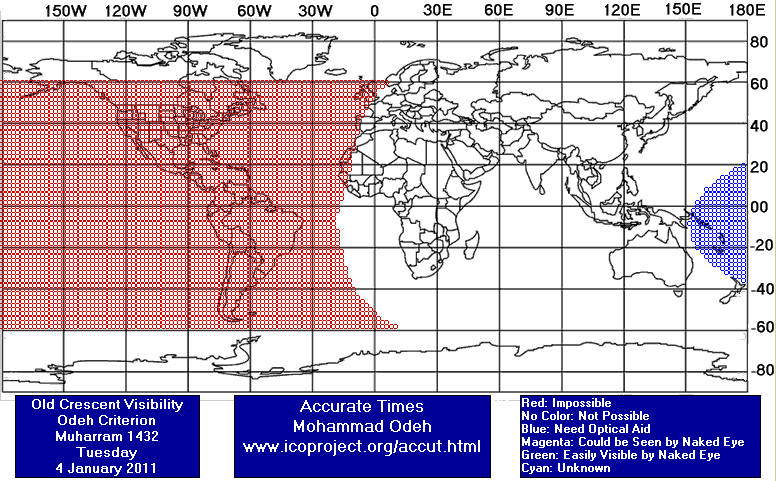
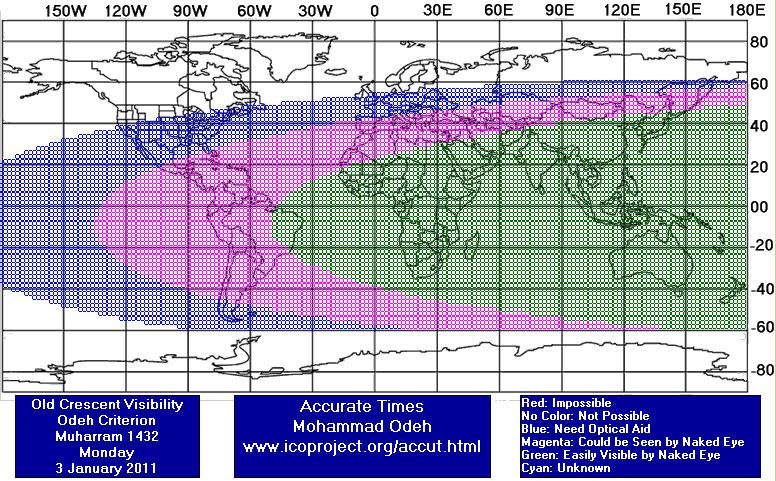
Muharram Waning (OLD) Crescent Observation Results
Mon 03 January 2011
Ghana
Mr. Abdul-Aziz Anyang said: "The weather was very hazy and the waning crescent could not be seen. A call to Tamale (the northern sector of Ghana)was also negative as the weather condition was worse than in Accra and also because their belt is closer to the Sahara desert than in Accra."
Iran
Mr. Alireza Mehrani said: "Observation Report Old Crescent = = = = = = = = = = Location: 33pol Bridge, Esfahan, Iran Latitude: 32° 38' 41.54" N Longitude: 51° 39' 54.11" E Elevation: 1570 meters from sea level Time zone: +3.5 Observer & photographer: Alireza Mehrani Date: Monday January 3, 2011 (Dey 13, 1389) Temperature: -1.4 C° Wind: Calm Humidity: 58% Barometer: 845.5 mb Visibility: 10 km Topocentric and local time values from "Moon Calculator" at Moonrise time: File name: amehrani-012011-old.jpg Time: 06:39 LT (03:09 UT) Moon Alt: 4° 28' 42" Sun Alt: - (5° 56' 15") Elongation: 14° 07' 27" Rel Azi: 9° 33' 13" Moon Width: 0.47' Phase: 1.68% Moon Age: 29h 55m before conjunction "
United Kingdom
Eng. Qamar Uddin said: "The eastern horizon before sunrise was totally cloudy. the waning crescent was not seen."
United States
Mr. Jim Stamm said: "Old Moon Crescent Observation Report ====================================== Observed: Monday; January 03, 2011 - 07:40 (Local) Location (WGS 84) = Tucson, Arizona (USA) Longitude = 110.9651 W Latitude = 32.4206 N Elevation = 842 meters Time Zone = -7.0 hours Surface conditions at location: Temperature = 0 °C Humidity = 63 % Pressure = 30.03 in. The sky was mostly cloudy, with a few breaks in the east. Magnitude limit at 9 degrees altitude with 120 power in C-8 telescope, before onset of twilight = 11.0 Topocentric and local time values from “Accurate Times”: Moonrise (at sea level) = 06:46 Sunrise (at sea level) = 07:20 Time from new moon at 07:40 = 18 hr. 32 min. Moon lag time = 35 min. Relative Altitude = 6.4 degrees Elongation from sun = 8.6 degrees Crescent width = 11 arc seconds Illumination = 0.6 percent I was NOT able to see the crescent, even through a telescope. There were sufficient breaks to give me a chance to see the crescent. However, I never got the deep blue sky that I was hoping for. Observer: Jim Stamm E-mail Address: StammJim@gmail.com"
